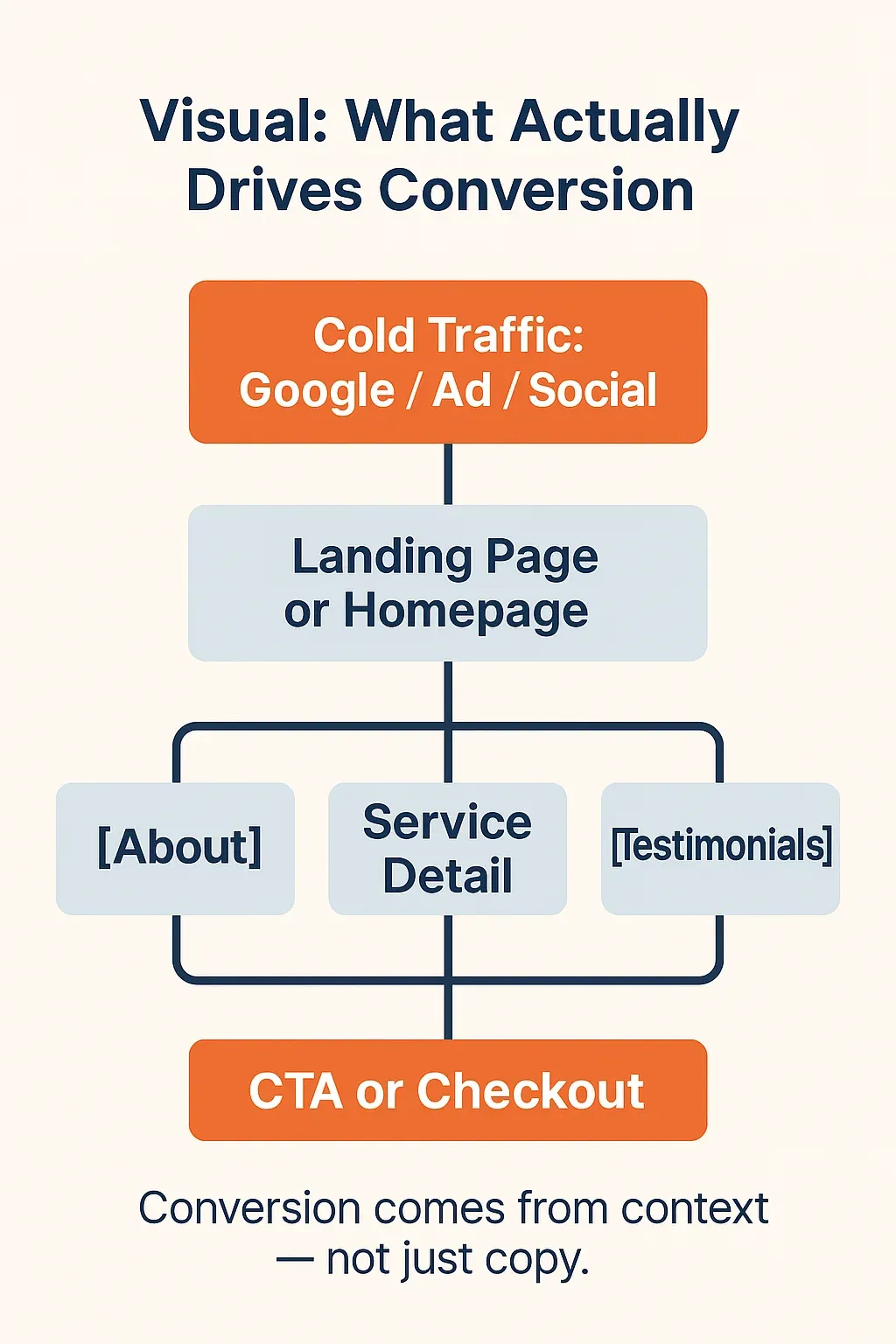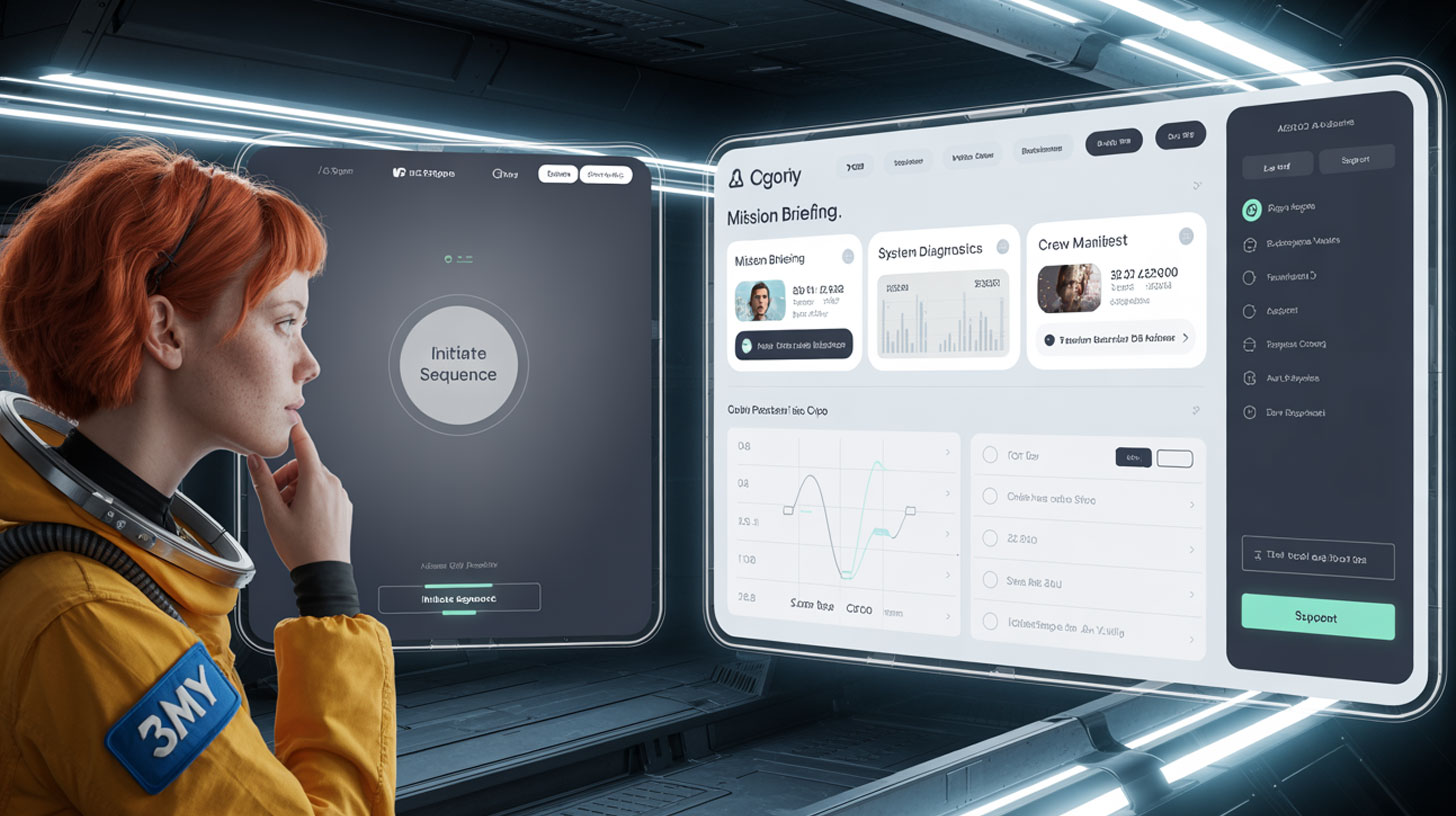In early-stage conversations, business owners often say:
It sounds efficient. Clean. Minimal. But in practice, “just a landing page” almost never performs well on its own — not for SEO, not for ads, not for conversions.
This article breaks down why relying on a single landing page is a weak digital strategy — and what modern websites need instead.
What Is a Landing Page (Technically)?
A landing page is a single-purpose, standalone page designed to capture leads or conversions. Often used in ads or email funnels, it’s stripped of navigation and distractions.
Landing pages work well when:
- You drive targeted, ready-to-convert traffic (usually from paid ads)
- You have a single offer and a narrow audience
- You already have awareness elsewhere (email list, social proof, SEO)
But outside those conditions? A lone landing page falls short.
Why a Single Page Usually Fails
1. No SEO Visibility
Search engines rank sites, not standalone pages.
- One page = minimal keyword coverage
- No supporting content = no topical depth
- No blog or structure = no internal links or content clusters
Even the best-optimized landing page can’t compete with:
- A site that answers adjacent questions
- A site with authority built over time
2. Lack of Context for Cold Traffic
If your ad lands a user on a page that says “Buy now,” but they don’t know you — they bounce.
- No About page to build trust
- No service breakdown to show details
- No testimonials, process, or FAQ
Cold traffic needs warm-up. A landing page can’t carry that load alone.
3. No Content for Retargeting, Email, or AI Assistants
You can’t:
- Retarget based on scroll depth or behavior if there’s no behavior to track
- Feed AI models structured answers if there’s no depth of content
- Capture top-of-funnel search traffic without blog content
Modern marketing is full-funnel. A single page can’t feed the top.
4. Low Conversion Without Supporting Pages
Even warm leads want:
- Details
- Proof
- Alternatives
Conversion rates increase when users:
- Visit 2–3 pages
- Skim a blog or read a case study
- See other product tiers or paths
One page? Feels like a squeeze. Especially for high-ticket services.
What You Need Instead
| Element | Purpose |
|---|---|
| Homepage | Explain who you are, what you do, and for whom |
| Services/Product Page | Deep dive into your offer and its value |
| About Page | Build trust and connection |
| Blog/Resource Page | Feed SEO, email, and chatbot content |
| Contact Page | Make outreach frictionless |
If you run ads or have landing pages, they should plug into this ecosystem — not replace it.
What About Microsites?
Microsites can work — if they’re structured. For example:
- A one-product brand with a homepage, checkout, and support page
- A lead gen funnel with a landing page + blog + confirmation content
- An event promo site with info, schedule, and signup
Still not just one page.

Final Word
A single page is almost never enough. It puts too much pressure on one touchpoint and ignores how people actually explore, compare, and decide.
If you’re just starting out, a simple 5-page site can outperform a fancy landing page in every way — traffic, trust, and conversions.
Need help building that minimal-but-complete foundation? We can help.










